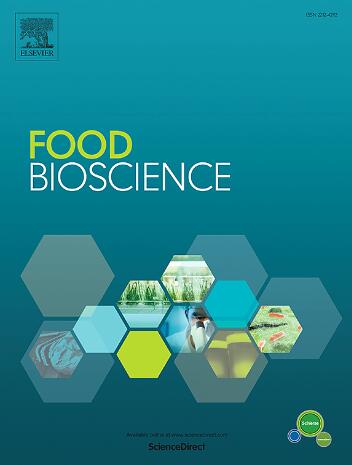大豆分离蛋白稳定精油纳米乳抗菌食品保鲜研究进展
IF 4.8
1区 农林科学
Q1 FOOD SCIENCE & TECHNOLOGY
引用次数: 0
摘要
随着人们对安全、天然和可持续食品保存的需求不断增加,大豆分离蛋白(SPI)基纳米乳液已成为生物活性化合物(如精油)的有前途的载体。包括高压均质、微流化、超声、自发乳化、相转化温度(PIT)和相转化成分(PIC)在内的几种技术已被用于制备具有理想液滴(50-200 nm)和改善的物理化学稳定性(长达30-60天)的基于spi的EO纳米乳液。对稳定策略的机理见解,包括SPI二级结构转变(例如,β-sheet富集),共价/非共价SPI -多酚相互作用,以及Pickering-like界面结构进行了严格的检查。本文对基于spi的乳化剂进行了系统的分类,阐述了spi稳定的EO纳米乳的功能特性,并讨论了影响其稳定性、生物功能及其在肉类、水果和乳制品基质中的应用的关键因素。此外,本综述独特地将配方参数与食品特定结果联系起来,并讨论了EO挥发性,感官影响和安全性评估等挑战。最后,讨论了监管方面的考虑和未来对提高递送效率、稳定性和营养相容性的展望。这一综合合成为spi基纳米乳液的设计和食品工业应用提供了一个实用的框架。本文章由计算机程序翻译,如有差异,请以英文原文为准。

Recent advances in antibacterial food preservation using soy protein isolate-stabilized essential oil nanoemulsions
With increasing demand for safe, natural, and sustainable food preservation, soy protein isolate (SPI)-based nanoemulsions have emerged as promising carriers for bioactive compounds such as essential oils (EOs). Several techniques, including high-pressure homogenization, microfluidization, ultrasonication, spontaneous emulsification, phase inversion temperature (PIT), and phase inversion composition (PIC), have been employed to fabricate SPI-based EO nanoemulsions with desirable droplets (50–200 nm) and improved physicochemical stability (up to 30–60 days). Mechanistic insights into stabilization strategies, including SPI secondary structure transitions (e.g., β-sheet enrichment), covalent/non-covalent SPI–polyphenol interactions, and Pickering-like interfacial structuring, are critically examined. This review systematically categorized SPI-based emulsifiers, elucidated the functional characteristics of SPI-stabilized EO nanoemulsions, and discussed the key factors influencing their stability, biofunctionality, and applications in meat, fruits, and dairy matrices. Moreover, this review uniquely connects formulation parameters to food-specific outcomes, and discusses challenges such as EO volatility, sensory impact, and safety evaluation. Finally, regulatory considerations and future perspectives on improving delivery efficacy, stability, and nutritional compatibility are addressed. This comprehensive synthesis offers a practical framework for the design and food industry application of SPI-based nanoemulsions.
求助全文
通过发布文献求助,成功后即可免费获取论文全文。
去求助
来源期刊

Food Bioscience
Biochemistry, Genetics and Molecular Biology-Biochemistry
CiteScore
6.40
自引率
5.80%
发文量
671
审稿时长
27 days
期刊介绍:
Food Bioscience is a peer-reviewed journal that aims to provide a forum for recent developments in the field of bio-related food research. The journal focuses on both fundamental and applied research worldwide, with special attention to ethnic and cultural aspects of food bioresearch.
 求助内容:
求助内容: 应助结果提醒方式:
应助结果提醒方式:


